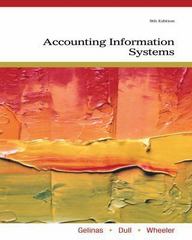Question
Task 2: Team Assignment spreadsheet to allow scenario planning for FNQ Timbers that recognises the effects upon each of the stakeholders that your team members
Task 2: Team Assignment
spreadsheet to allow scenario planning for FNQ Timbers that recognises the effects upon each of the stakeholders that your team members addressed in the individual task. Your team's model will:
a.Allow FNQ to make choices (input) about their operations, and see the effect of those choices upon the stakeholders in terms of the criteria (measures) identified by team members in Task 1.
b.The spreadsheet will require you to make assumptions about the relationships between the choices and the criteria. These assumptions should be clearly stated and able to be adjusted. The model will be professionally presented, easy to use, and powerful.
c.A GANTT chart with a list of tasks assigned to individuals, and dates to be completed. Complete this in a separate worksheet in your spreadsheet. Clearly label the worksheet.
a.There should be columns for Task, individual assigned, and each week of the project.
i.Show the planned start and finish weeks for each task
ii.Show the actual start and finish weeks for each task ((you will need to use two rows for each task)
iii.Identify important milestones
iv.Show interdependencies between tasks.
Deliverables:
One team member will submit on behalf of the team (to Blackboard):
1.Team Output: A spreadsheet model addressing the requirements above. The spreadsheet only needs to be submitted by one team member.
2.INDIVIDUALLY download, complete and submit the reflection sheet. (document in the Task 2 materials)
Learning Objectives for each requirement (See the marking rubric for more detail):
Group Assignment - Spreadsheet (One submission per group) (70%)
a.Capacity to develop a spreadsheet model that meet's the user's needs.
All user's requirements are incorporated into the model in ways that effectively increase the usability, effectiveness, or efficiency of the spreadsheet.
b.Knowledge and application of sound principles of spreadsheet design.
Model is accurate, usable, flexible and auditable.
c.Application of project management skills.
Professionally presented and complete GANTT Chart.
Individual Reflection - Word Document (individual submission) (30%)
d.Acknowledgement and facilitation of strengths and skills of team members.
Evidences advanced capacity to facilitate collaborative achievement of the group task by encouraging and integrating individual viewpoints and supporting team members to fully leverage their individual skills and strengths.
e.Knowledge and application of effective group processes.
Demonstrates sophisticated knowledge of group processes, evidenced through comprehensive and rigorous documentation and application of this knowledge in completing the group task.
f.Use of leadership skills when engaging with team members.
Demonstrates sophisticated use of leadership skills to confidently and constructively inspire, motivate and encourage the team.
g.Equal contribution to the group task (individual marks for the group assignment will be adjusted to reflect peer evaluation)
Completes assigned individual tasks in an insightful, sophisticated, timely, rigorous and accurate manner as evidenced by self and peer assessment. Self and peer assessment will affect be mark assigned to each team member.
Instruction document for Excel Spreadsheet
User requirements for the spreadsheet model: (a basic model has been provided, but you are required to add and improve it)
Organise your spreadsheet with a title page and menu, with links to the key areas/ worksheets as follows:
Identification: The title of the spreadsheet, who created it, what it was created for, the date of creation and the date the spreadsheet was last altered.
Documentation: Including instruction on how to use the spreadsheet, limitations, and assumptions.
Data: A clear LAYOUT and clear labels are important. Much of the data may be assumed (in which case make sure that this is made clear).
For example, if one of the stakeholder criteria was CO2 emissions, and the choice being made was distance transported from forest to processing site, you would need to consider the relationship between kilometres travelled and CO2 emission from the fuel consumed. The CO2 emissions per kilometre can be found with a google search and inserted into the data area (in which case, a link to the site could be included). The number of tonnes being produced by FNQ Timbers can be assumed but should be included in the data section so it can be changed if necessary. The number of kilometres might be a choice (based on the location of the processing plant).
Workings: Any complex calculations should be clearly explained, and therefore AUDITABLE. All formulas should be ACCURATE. There should be no numbers included in formulae - it should all be based on links to the data so that your model will be FLEXIBLE.
Input/ Output: Here the layout of input and output should be organised for USABILITY and to support decision making (by seeing the effects of changes to input). It will be particularly important to see how decisions have positive effects for some stakeholders, and negative effects for others so that compromises or trade-offs can be made.
Step by Step Solution
There are 3 Steps involved in it
Step: 1

Get Instant Access to Expert-Tailored Solutions
See step-by-step solutions with expert insights and AI powered tools for academic success
Step: 2

Step: 3

Ace Your Homework with AI
Get the answers you need in no time with our AI-driven, step-by-step assistance
Get Started


